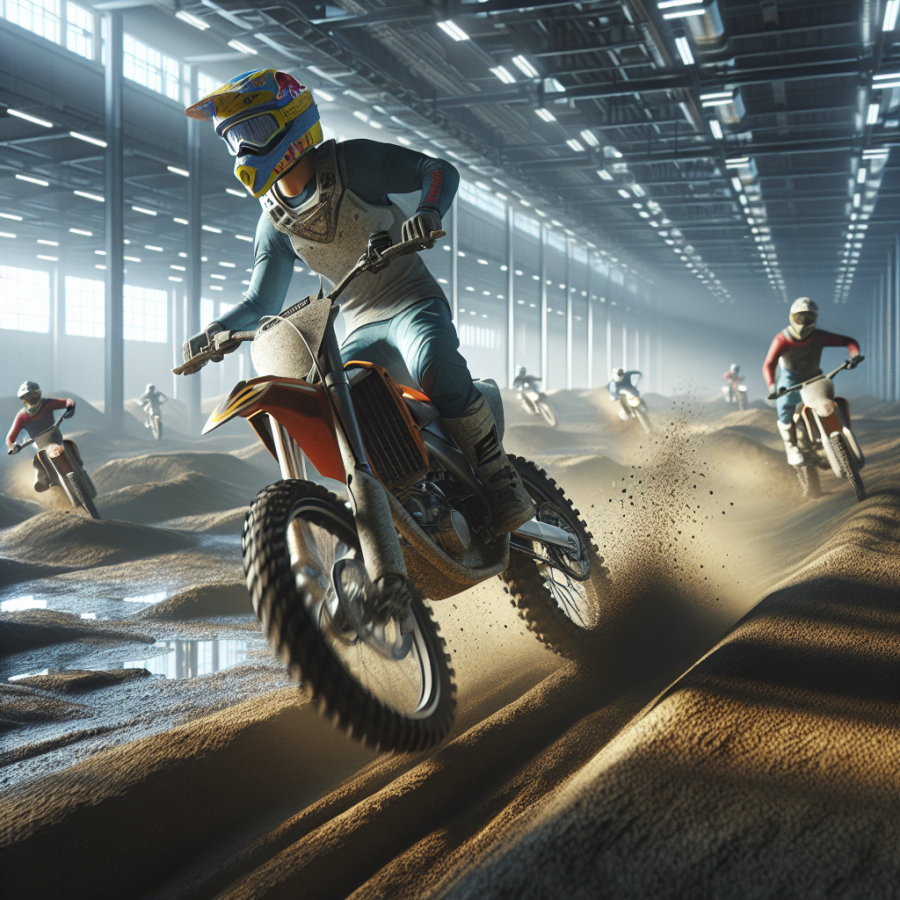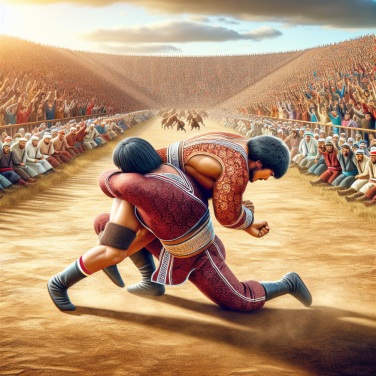Adrenaline Surge: The Excitement and Strategy Behind Indoor Enduro Success
Getting an adrenaline surge is one of the most exhilarating aspects of indoor enduro racing, a sport that combines the thrill of motorcycle racing with the challenge of obstacle navigation. One of the keys to success in this intensely competitive field is the ability to manage this adrenaline-fueled excitement to maintain focus and decision-making skills on the course.
**Understanding the Adrenaline Factor**
Racing indoors means tight corners, unexpected jumps, and an environment that requires quick reaction times. Adrenaline, the body's 'fight or flight' hormone, is naturally released in response to the stressful and thrilling situations riders face. This can lead to heightened awareness and quicker reflexes, which are beneficial up to a point. However, too much adrenaline can cause a rider to become over-agitated, potentially leading to errors.
**Strategic Training for Mental and Physical Agility**
Top indoor enduro athletes engage in strategic training to prepare for the exertion of managing adrenaline. Mental conditioning exercises, such as visualization and meditation, help riders anticipate each section of the course and rehearse their reactions to various scenarios. Physical training, on the other hand, is designed to boost stamina and agility, allowing riders to navigate the course with precision even as fatigue sets in.
**Course Familiarization and Technical Mastery**
Successful riders invest time in familiarizing themselves with each course's layout. Understanding the sequencing of obstacles allows a rider to plan ahead, conserving energy and handling the bike efficiently. Technical mastery of their motorcycle is also crucial; this includes fine-tuning the suspension for the varying surfaces and practicing clutch control for tight maneuvers.
**Adapting Riding Style to the Indoor Arena**
Indoor enduro courses demand a different riding style compared to outdoor circuits. Riders must be adept at adapting their techniques to confined spaces. This could mean shorter, more explosive bursts of speed, tighter turning techniques, and more frequent braking and accelerating. Harnessing adrenaline to enhance these skill sets is part of what separates the good from the great in the sport.
**Nutrition and Recovery as Part of the Strategy**
Maintaining peak physical condition during the indoor enduro season requires careful attention to nutrition and recovery. Riders need a diet that sustains energy levels and aids in quick recovery between races. Adequate hydration, balanced meals, and rest are all strategic elements that help manage adrenaline levels and maintain focus during races.
**Psychology of the Competitive Edge**
Finally, the psychology of racing plays a significant role in conquering the course.
Read also:
Understanding the Science: Why Do Golf Balls Have Dimples?"
Navigating the Challenges: Mastering the Twists of Indoor Enduro
Enduro racing presents a unique set of challenges to the motorbike racer. With the advent of indoor enduro tracks, these challenges become even more pronounced due to the controlled environment, tight spaces, and highly technical obstacles. Navigating these courses requires a specialized skill set that combines precision, speed, and strategic planning.
The first step in mastering the twists of indoor enduro is developing a deep understanding of your bike's capabilities and limitations. Riders must be intimately in tune with how their bikes respond to different surfaces and obstacles. Indoor tracks often incorporate a variety of surfaces like concrete, wood, and dirt, each offering different levels of grip and requiring subtle changes in riding technique. Fine-tuning your motorcycle's suspension settings for the specific conditions of an indoor track can greatly enhance handling and performance.
Technical sections with tight turns and abrupt changes in elevation are hallmarks of indoor enduro tracks. Riders must be skilled in tight cornering, often relying on techniques such as the pivot turn or using the clutch to manage power output and maintain control while navigating sharp angles. Mastering the art of balance and throttle control is critical to ensure that the power is delivered smoothly, especially when overcoming obstacles like logs, rocks, or artificial constructs designed to test the rider's dexterity and precision.
Another significant challenge is the close proximity of the obstacles. Indoor tracks are more compact, leaving less room for error. Racers must have a clear vision of the course ahead and maintain a level of spatial awareness that allows them to transition quickly between obstacles without losing momentum or falling. Anticipating the next move while still negotiating the current obstacle is a mental game that requires practice and experience.
Timing is also critical in indoor enduro. The sequence and rhythm of attacking the obstacles can make or break a racer's performance. A rider must know when to accelerate into a jump or when to brake before a tight corner. The difference between clearing an obstacle smoothly and stalling or crashing can be a mere fraction of a second's decision-making process.
Endurance training cannot be overlooked. Despite the races being shorter than traditional outdoor enduro events, indoor racing is often more intense and physically demanding due to the constant barrage of obstacles. Physical conditioning, along with practice sessions on similar terrain, can help racers maintain their concentration and strength throughout the competition.
Mental preparation is just as vital as physical readiness.




